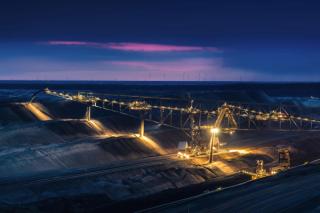
Cultural heritage: Indigenous and cultural heritage values driving sustainable development
by Flavia Kiperman
View post

DeepMind’s unbeatable AlphaGo has mastered one of the oldest boardgames in existence so well that its moves are considered ‘beautiful’[1]. In 2022 AlphaGo entered a five-game tournament in Soul where it beat Lee Sedol, the best Go player of the past decade[2].This AI not only learned how to play Go, it learned how to beat the creative intuition of one of the best human players of the game.
Whilst this is incredibly impressive and humbling, what does this mean for businesses and ESG? Effective matchmaking of AI technology with ESG technical expertise is a priority challenge. Let’s consider how AI can make the leap from boardgames into business operations:
“We can only see a short distance ahead, but we can see plenty there that needs to be done”[10]. Alan Turing’s 1950 comment is apposite today. At this point, we have a fair understanding of the potential of different AI technologies. We know we’re about to see a disruption to how we do things (hopefully for the better) and we can point to some practical examples. Many of us who work within the built environment, industry, transport, or energy sectors don’t yet know how AI will impact our day-to-day work, or what AI means for the environmental and socioeconomic issues we face. We do know the key to success is matching-up the right people with the right technology.
We are beginning to understand the complex interplay and trade-offs that are inherent in our decision-making journey to towards Net-Zero. The kind of systems thinking possible through AI has the potential to be a significant game changer.
-----------------------------
References
[1] - The Sadness and Beauty of Watching Google's AI Play Go | WIRED: https://www.wired.com/2016/03/sadness-beauty-watching-googles-ai-play-go/
[2] - What we learned in Seoul with AlphaGo (blog.google): https://blog.google/technology/ai/what-we-learned-in-seoul-with-alphago/
[3] - Forests, Land and Agriculture - Science Based Targets: https://sciencebasedtargets.org/sectors/forest-land-and-agriculture#:~:text=Key%20requirements%20of%20the%20SBTi%20FLAG%20Guidance&text=Set%20long%2Dterm%20FLAG%20science,term%20FLAG%20science%2Dbased%20targets.
[4] - VM0032 Methodology for the Adoption of Sustainable Grasslands through Adjustment of Fire and Grazing, v1.0 - Verra: https://verra.org/methodologies/vm0032-methodology-for-the-adoption-of-sustainable-grasslands-through-adjustment-of-fire-and-grazing-v1-0/
Publications - IPCC-TFI (iges.or.jp): https://www.ipcc-nggip.iges.or.jp/public/gpglulucf/gpglulucf.html
[5] - Land Sector and Removals Guidance | GHG Protocol: https://ghgprotocol.org/land-sector-and-removals-guidance
[6] - Abouloifa, H., Bahaj, M. (2024). Artificial Intelligence in Supply Chain 4.0: Using Machine Learning in Demand Forecasting. In: Gherabi, N., Awad, A.I., Nayyar, A., Bahaj, M. (eds) Advances in Intelligent System and Smart Technologies. I2ST 2023. Lecture Notes in Networks and Systems, vol 826. Springer, Cham. https://doi.org/10.1007/978-3-031-47672-3_14
[7] - Generative Urban AI Is Here. Are Cities Ready? (forbes.com): https://www.forbes.com/sites/timothypapandreou/2024/02/18/generative-urban-ai-is-here-are-cities-ready/
[8] - Machine learning can boost the value of wind energy - Google DeepMind: https://deepmind.google/discover/blog/machine-learning-can-boost-the-value-of-wind-energy/
[9] - Energy Forecasting Software | EnergyTeller | VTT (vttresearch.com): https://www.vttresearch.com/en/ourservices/vtt-energyteller-energy-forecasting-service
[10] - A. M. TURING, I.—COMPUTING MACHINERY AND INTELLIGENCE, Mind, Volume LIX, Issue 236, October 1950, Pages 433–460, https://doi.org/10.1093/mind/LIX.236.433

by Flavia Kiperman

by Jasper Schrijvers , Matthew Hoare

by Clodagh Connolly, Nicola Inge, Andres Schottlaender